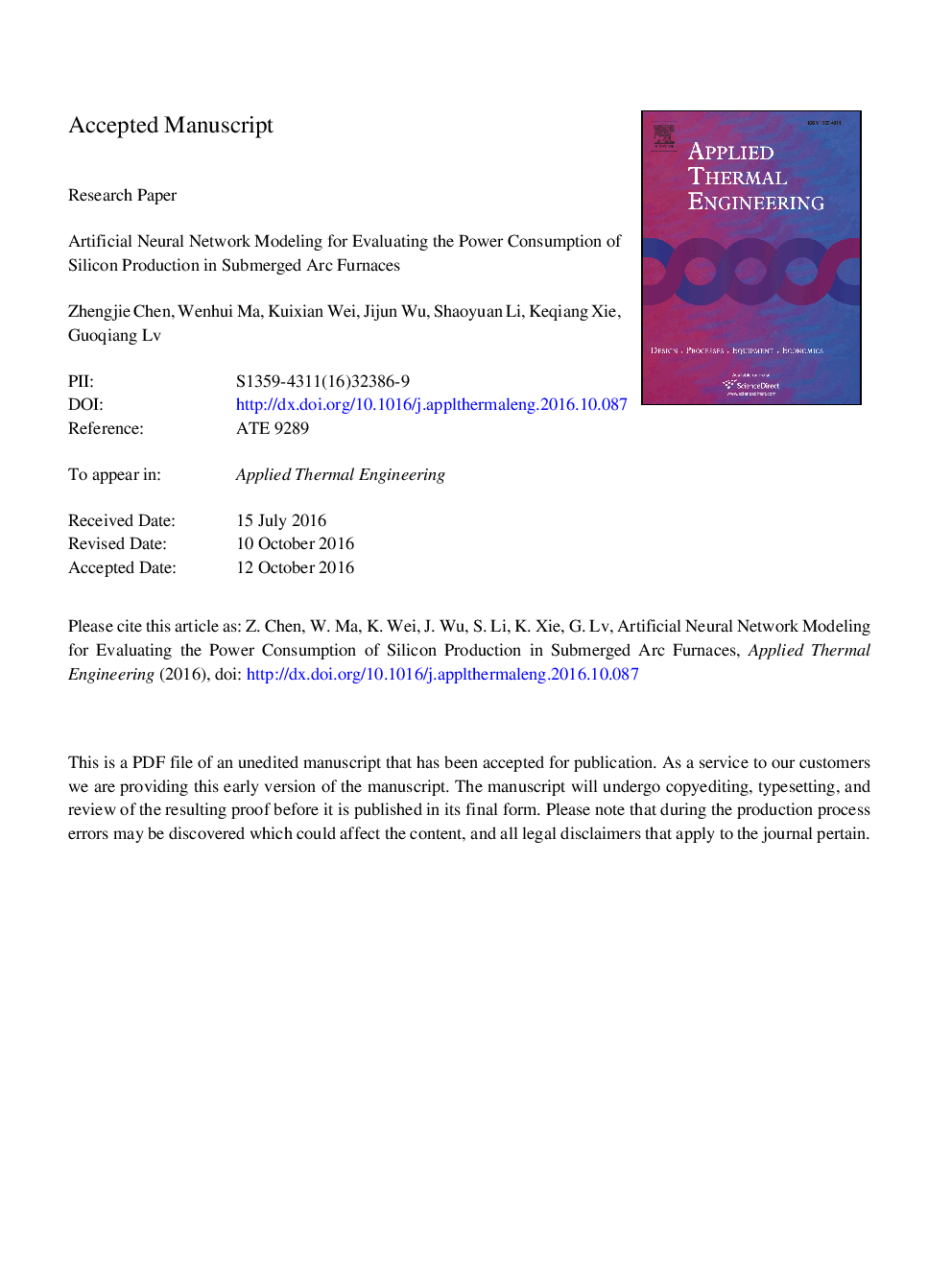| Article ID | Journal | Published Year | Pages | File Type |
|---|---|---|---|---|
| 4991700 | Applied Thermal Engineering | 2017 | 37 Pages |
Abstract
The Pearson correlation coefficient between different quantities of metal oxides and specific power consumption was used here to determine the effect of metal oxide content on the power consumed by an industrial silicon production process. The results showed that the effect of oxide content on power consumption falls into the order CaOÂ >Â Fe2O3Â >Â Al2O3. The interactive effects among the main oxide matter (CaO, Fe2O3, and Al2O3) and remaining trace oxide matter (MgO, K2O, TiO2, Cr2O3, and NiO) of raw materials were also analyzed via contour diagrams; the results showed that the dominant metal oxides play a much more important role in power consumption than any of the trace oxides. The oxide content of the charge raw material critically affects the specific power consumption and electrical energy costs of the submerged arc furnace (SAF), and can be reduced by appropriately taking them into account. ANN (artificial neural network) modeling was used to evaluate the power consumption of silicon production in a typical SAF. The value R2Â =Â 0.80 of the neural network indicates that 80% of the variation in specific power consumption can be accounted for via the proposed model.
Keywords
Related Topics
Physical Sciences and Engineering
Chemical Engineering
Fluid Flow and Transfer Processes
Authors
Zhengjie Chen, Wenhui Ma, Kuixian Wei, Jijun Wu, Shaoyuan Li, Keqiang Xie, Guoqiang Lv,
